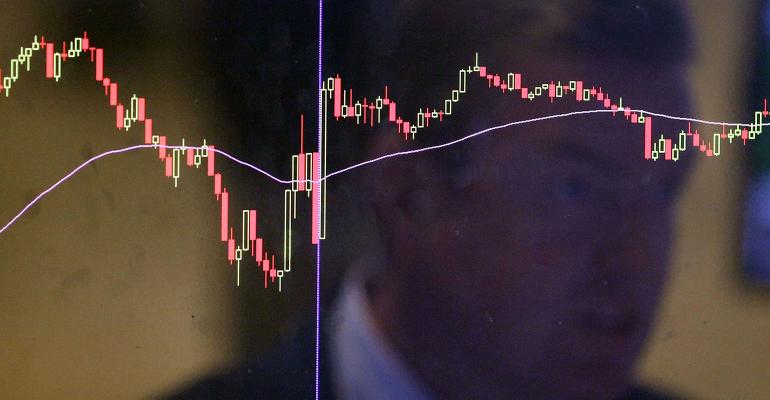By Heather Kennedy Miner
U.S. equity valuations are high by conventional metrics. But viewed in the context of low interest rates, a continuing global economic expansion and metrics such as the equity risk premium, we see a more nuanced picture, one where valuations are justified and even defensible.
We would stress that valuation alone in the past typically has been a condition more than a catalyst for market moves. Equity-market corrections generally require an external shock of some sort. Valuations on the whole have been stubbornly persistent. Forward S&P 500 Index price-to-earnings ratios have held above the 80th percentile for as many as five straight years in recent decades (1997-2002).1
At the same time, elevated valuations underscore the possibility of modest equity returns in the coming years and, in our view, leave investment professionals less room for error as they construct client portfolios.
Volatility could be headed higher
In periods of elevated valuation, our base case is that investment professionals will need to work harder to achieve increasingly modest returns, and may be tempted under such circumstances to consider taking on greater risk for each unit of return as a response. We think that would be a mistake.
Early 2017’s historic lows in volatility, as measured by the CBOE Volatility Index (VIX), strike us as a mispricing of persistent political risk across markets. Anticipation of pro-growth Trump policies has seemingly shielded equity markets from the policy-induced uncertainty in currency and fixed income markets. Emmanuel Macron’s victory in the May French elections could be viewed as suggesting the populist tide in Europe has ebbed.
As mid-May’s rocky trading suggests, we think political risk has more surprises in store. Low VIX levels and placid equity markets strike us a temporary phenomenon; the VIX has traded above its first-quarter average for over 90 percent of its history.2
In an environment of modest expected returns and higher volatility, a fresh look at strategies designed to reduce risk may be warranted. We remain cautious on pure market beta.
Earnings power ‘for the win’
We look to earnings growth potential to drive equity returns during 2017. Deregulation, potential tax reform and more populist trade policy are three reasons we think investment professionals must consider using a nontraditional lens. Top-down frameworks constructed around value-versus-growth style boxes and other conventional methods are likely to prove inadequate. We expect more than 10 percent U.S. corporate earnings growth in 2017, with potential upside in 2018 in the event of tax reform.
The effect of these policy-driven impacts could be divergent across sectors of the market. For instance, the effective corporate tax rate in the U.S. energy sector is 36 percent but only 25 percent in information technology stocks.3 The effect is not likely to be linear: A cash repatriation provision, should one be included in comprehensive tax reform, may be hugely accretive to the technology sector.
Beyond beta, beyond borders
For those considering diversifying beyond U.S. equities, emerging markets may offer especially attractive possibilities, as valuation imbalances recently have been less pronounced.
Investing internationally in our view requires selectivity at both the security and country levels in the effort to reduce exposure to overextended countries — for instance China and its elevated debt levels — and in the attempt to capitalize on attractive opportunities.
We see select opportunities as well across Europe and Japan, where earnings power also remains in focus. In Japan, approximately 50 percent of TOPIX companies trade below book value.4
The implications as we see them: there is virtue in remaining invested, as fundamentals have aligned to justify elevated valuations. Expensive markets often remain that way. We would focus on the global opportunity set, while embracing risk management and strategies with the potential to offer risk reduction.
End Notes
- Forward price-to-earnings ratios refer to the next twelve month price-to-earnings ratios calculated by Goldman Sachs Global Investment Research (GIR). Percentiles are calculated looking at Forward Price To Earnings Ratio data from January 1976 to present.
- The VIX refers to the CBOE Volatility Index taken from Bloomberg on a daily basis. Q1 2017 average refers to the average of daily data during Q1 2017, compared against historical daily VIX data dating back to 1993, the year that the index was launched.
- Effective corporate tax rates refer to the 10-year median effective tax rate for S&P 500 companies in the consumer discretionary and information technology sectors calculated by Goldman Sachs Global Investment Research (GIR).
- TOPIX company price-to-book ratios reflect data from GSAM and Bloomberg as of 4Q 2016.
Heather Kennedy Miner is the Global head, Strategic Advisory Solutions for Goldman Sachs Asset Management.





